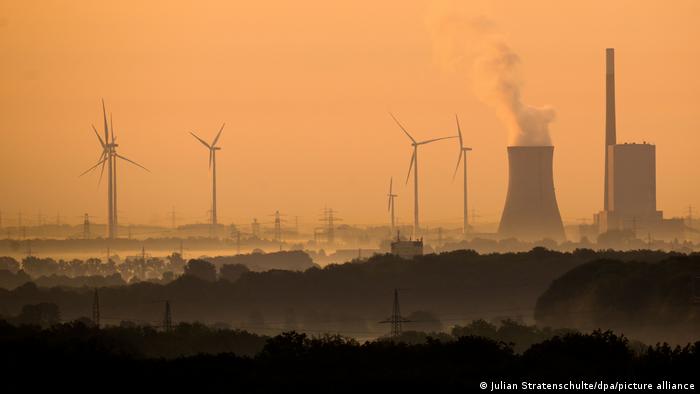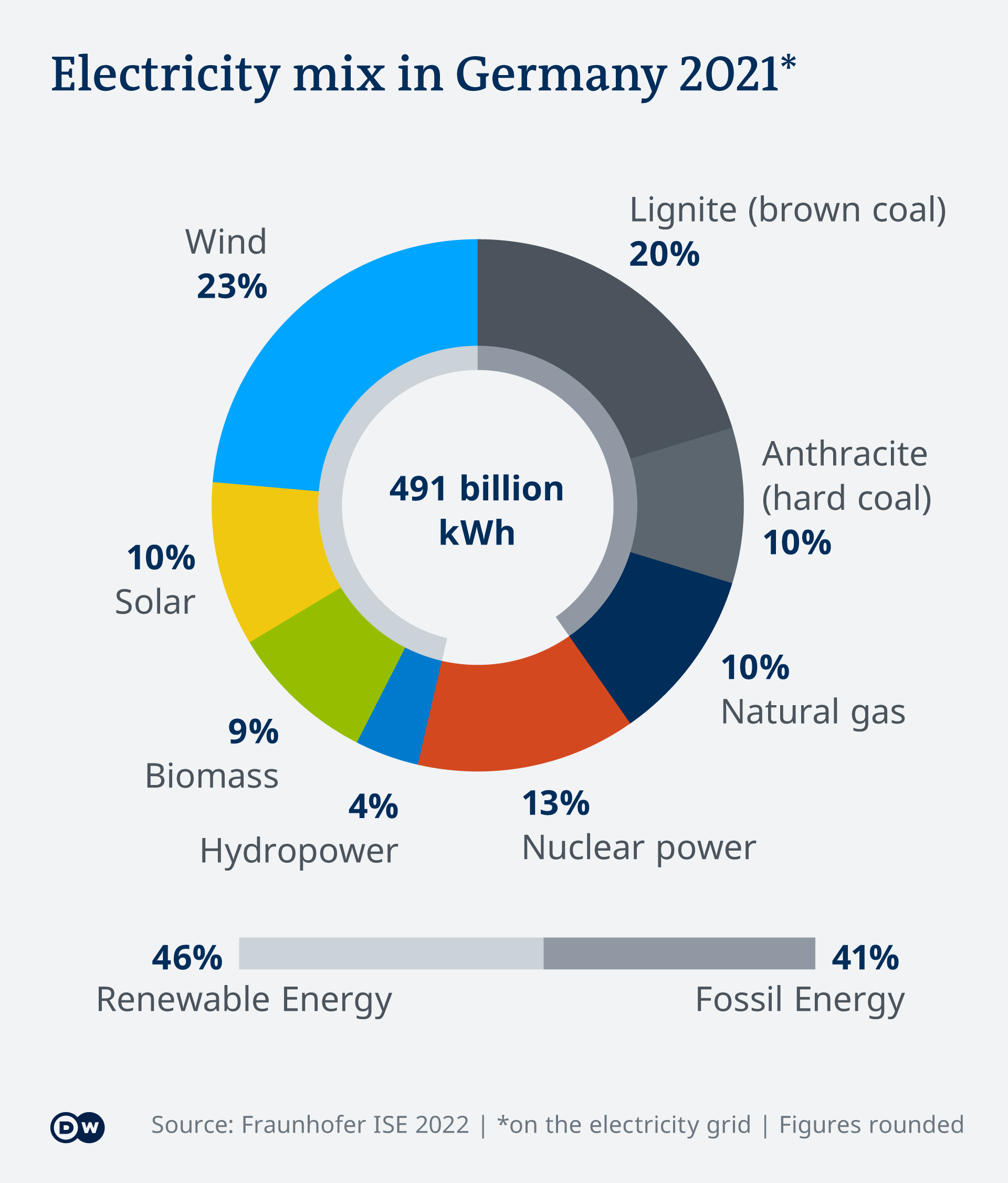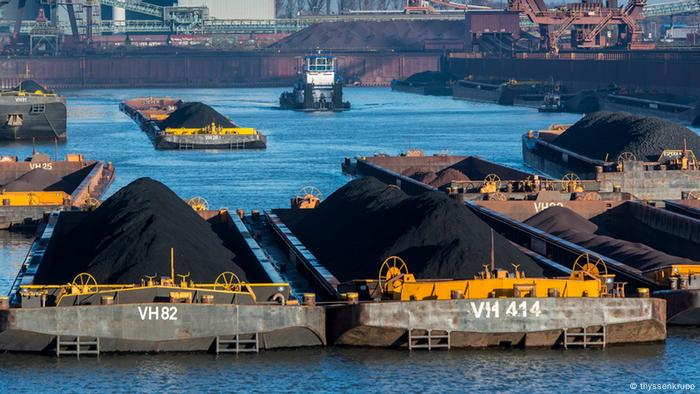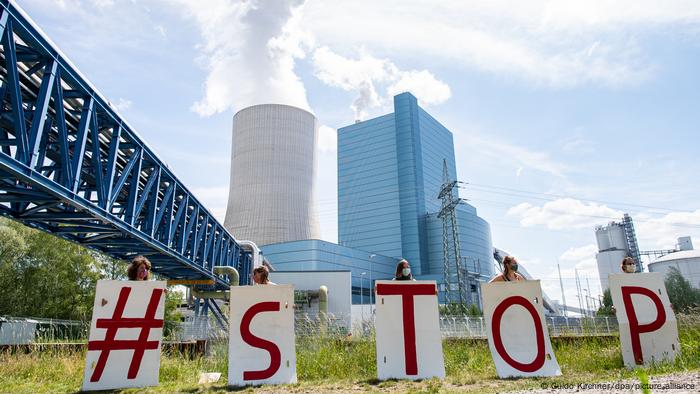NO NUKES EITHER
Germany's energy U-turn: Coal instead of gas
Berlin has realized it will never again import as much energy from Russia as before the Ukraine war. So the challenge is to wean Germany off its dependence on Russian energy sources, and quickly. The question is how.

On August 1, the coal power station in Mehrum became the first to be reactivated
Starting this week, German hard coal-fired power stations are restarting operations, which were being phased out because of the hugely detrimental climate impact on a world already ravaged by global warming. Germany's goal had been to phase out all coal-generated electricity by 2038.
But now, the government is swallowing the bitter pill of allowing coal-fired power back onto the grid. It is hoped that this will replace the gas-fired electricity that currently makes up some 10% of Germany's overall energy mix.
Chancellor Olaf Scholz spoke of temporary emergency measures "imposed for a very short period of time that don't take anything away from our climate targets."
"What must not happen is that we slide into a global renaissance of fossil energy, and coal in particular," the chancellor warned.
But at first glance, last year's global data seems to suggest that is precisely what is happening: Never before has the world used so much coal to generate so much electricity. And the International Energy Agency (IEA) warns that the same pattern of high demand and high production will be repeated this year.
Import ban on Russian coal
Alexander Bethe, chairman of the Board of the Berlin-based Association of Coal Importers, is sure of that: "This winter, we will certainly import over 30 million tonnes (33 million US tons) of hard coal to keep our power stations in operation. That would be 11% up on 2021."
Before the war in Ukraine, 50% of the coal for Germany's power stations was imported from Russia. But on April 9, the EU hit Russia with a sales and import ban on coal and oil — yet not with immediate effect. Oil will be delivered until the end of the year, while coal shipments may only be delivered and offloaded through August 10.

Finding other suppliers is not the problem, say German coal importers. These include sources in South Africa, Australia, the US, Colombia and Indonesia, says Bethe. But these various kinds of coal each have different characteristics and qualities, he explains. It's important to see which mix is the best for the German power stations. And tests are underway.
More difficult perhaps, according to Bethe, are the transport routes for coal. The big sea ports like Amsterdam, Rotterdam, and Antwerp are all booked out. Inland shipping routes taking coal by ship or train from the big ports to the power stations are at their limit. This is also in part due to Germany's shortage of skilled labor.
The workforce had already been cut back in line with German's goal of phasing out coal by 2038. Inland waterways were frantically reducing their capacities in line with expectations.
One-third of Germany's coal imports come up the River Rhine. But at the time of summer drought, the water levels there are so low that ships can only sail at 30% to 40% of their loading capacity.

Coal transport infrastructure is maxed out in Germany
Coal price hikes
At the beginning of 2021, a tonne of hard coal would go for $64 (€63) on the world market. Now, the price has risen close to $400. Some 7.4 billion tonnes of hard coal were mined last year, half of it in China. But coal-mining countries meet their own needs first, and only 1 billion tonnes end up being traded on the global market.
Given the fact that electricity prices are rising dramatically, there are huge incentives for operators of decommissioned plants to make every effort to get them back on the grid. The first operator to do so was the Mehrum plant in central Germany, which belongs to Czech energy concern EPH and had been closed down at the end of 2021. Others say they intend to follow suit.
German energy supplier EnBW only wants to keep one plant in operation longer than previously planned. Five other plants that had been turned off for good are too old and out-of-date to be reactivated.
Brown coal comeback as well?
But it is not only hard or black coal-fired power plants that are to be brought back online: The German government is also preparing a regulation for the beginning of October to restart lignite-fired power plants that have been shut down.
This also affects the Jänschwalde power plant in Brandenburg, where two units had been switched off to so-called "safety standby." If they were to be restarted, they could supply as much electricity as a regular nuclear power plant.

Bad news for climate activists: Lignite power stations are likely to see a renaissance, too
But if they were to be restarted now, 13 million cubic meters of water would be needed to drive the steam turbines, says environmental network Green League. According to the network, this would further exacerbate the water shortage in the Spree River.
Another problem is that the old units do not comply with emissions regulations, as the operator did not consider it necessary to upgrade them in view of the complete shutdown.
Moreover, there is a lack of skilled personnel; the workers have long since been deployed elsewhere.
This article was originally written in German.
No comments:
Post a Comment